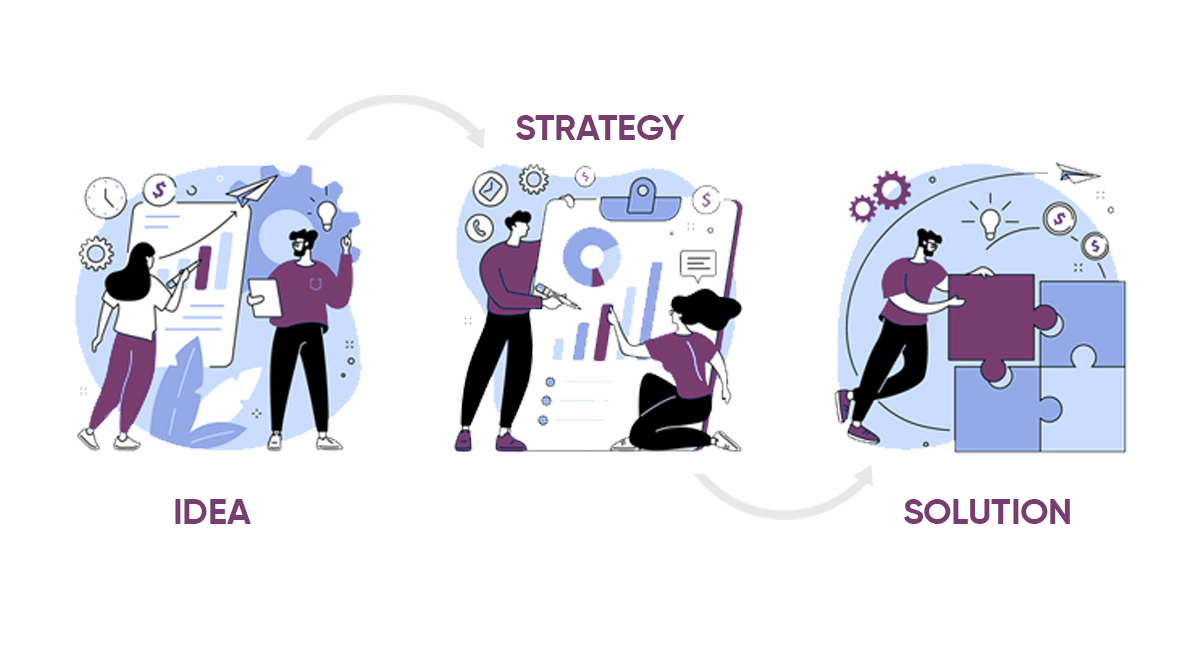According to research published by Harvard Professors Robert Kaplan and David Norton (2008), the rate of strategy execution failure in businesses ranges from as high as 60% to 90%. Many organisations will fall short of their goals, especially when there are disruptions in the business environment within which they operate.
However, there are opportunities to set self apart and lead organisations to success, through execution acceleration and moving from a reactive to a proactive approach. The following pillars should be in place to successfully implement your plans; a clear strategic vision, the right people and culture, accountability and enterprise performance reporting.
A Clear Strategic Vision
“If you do not know where you are going, you might end up someplace else.” —Yogi Berra
Properly articulating a vision is vital for any business, particularly in a fast-paced and rapidly evolving sector. A poorly crafted and unclear vision statement will most likely lead to poor execution. Hence, a vivid vision is critical to successfully executing the strategic plan. The vision statement should clearly define unique values, success definition, and destination. It must achieve strong human connections within the organisation in order to be assured of its successful execution.
One way of getting your employees on board with the vision is to deploy The Visualisation Approach. This process entails the use of stories and visual comprehension modes to achieve a deeper connection to the vision. This approach increases group internalisation and follow-through by explicitly connecting the strategic intent to the desired execution outcomes.
Do you need to activate your vision or strategy? You can book a free consultation with us.
The Right People and Culture
“44% rank aligning the implementation of strategy to company culture as the toughest challenge.” – Cascade (2020)
Better execution starts with successfully activating strategy into the culture, yet most organisations do not usually see the line between culture and strategy execution. Even where they do, they are unable to achieve the desired impact on execution. In truth, the successful execution of a strategy ultimately depends on individual members, especially key managers. Therefore, aligning strategy with learning and internalization, managing, measuring, and rewarding people is critical to effective strategy execution. Today’s management must put strategy activation, a strong company culture, employee competence, and experience as a priority. Otherwise, the consequences will be reflected in the strategy’s execution.
H. Pierson provides a powerful tool for aligning the culture, energies, and talent of your employees towards achieving your organization’s strategic objectives. Our Strategy Activation and Cascading Solutions close the gap in strategy development. Download our brochure.
“The ability to make good decisions regarding people represents one of the last reliable sources of competitive advantage since very few organizations are very good at it.”—Peter Drucker
Accountability and Enterprise Performance Reporting
Who in the organisation is responsible for tracking the progress of specific strategic initiatives?
How do you ensure updates are on time and accurate?
Frequently, strategic initiatives fail because no one is held accountable for their progress. When a team or multiple individuals are the “owners” of an initiative, there is no one clear-cut accountable party.
The accountability and reporting process can be broken into data collection, data analysis and reports. Data collection is the process of collating information from disparate places into one system, to enable your analysis and decision-making with as much information as possible. Data analysis entails the examination of data to learn more about the story, with the use of data visualisation to increase comprehension through charts, grids, colour-coded icons, heat maps, dashboards etc. It helps to identify what is on and off-target, as well as what is needed to adapt into existing plans based on emerging observations. Reports help to distribute findings so that team(s) can review and discuss them for decision-making purposes.
Enterprise Performance Reporting is essentially about organising performance data, so that grey areas can be quickly identified within the execution process, track improvements, and ultimately foster accountability and execution success.
Through our 30+ years of experience working with clients across multiple sectors, we know what it takes to overcome challenges in the execution of your corporate strategies. This is achieved by fully deploying our proprietary tools and techniques that drive firm-wide strategy execution.
Author: H.Pierson’s Strategy Team
References
Kaplan, R.S., & Norton, D.P. (2008). The Execution Premium: Linking Strategy to Operations for Competitive Advantage. Massachusetts: Harvard Business Press
Team, C. (2020, March 13). 51 Strategy Statistics and 3 Key Lessons to Help You Succeed. Retrieved from Cascade: https://www.cascade.app/blog/51-strategy-statistics
Thiru, T. (2020, February 19). How to Bridge the Gap between Vision and Execution. Retrieved from Forbes: https://www.forbes.com/sites/forbestechcouncil/2020/02/19/how-to-bridge-the-gap-between-vision-and-execution/?sh=24f6e5e63548


